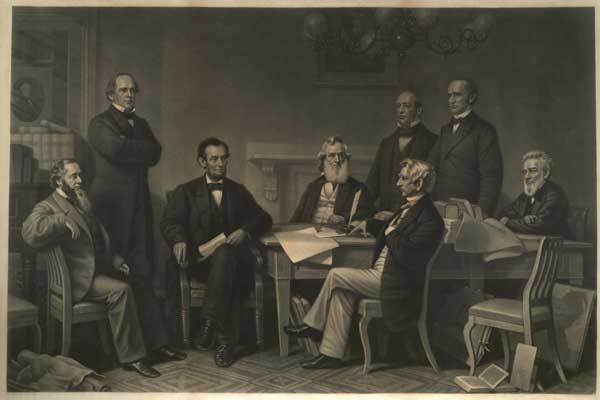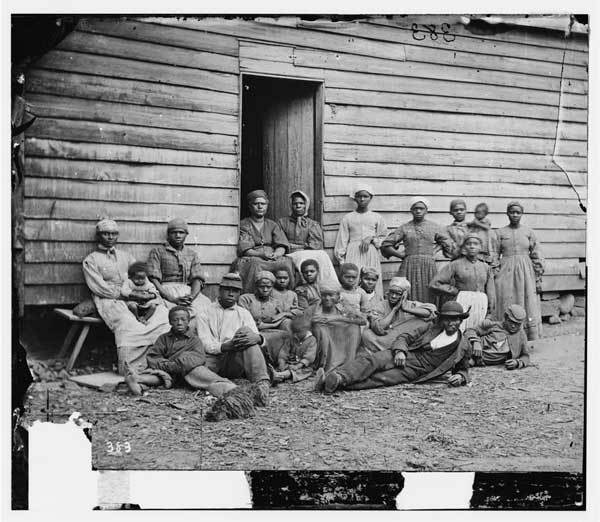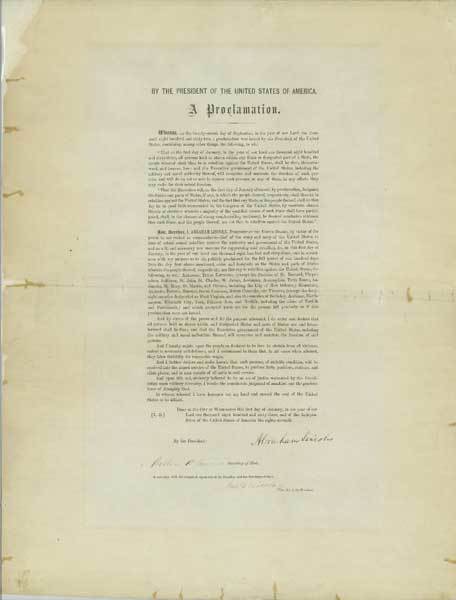When Abraham Lincoln issued the Emancipation Proclamation on January 1, 1863, it was a watershed moment in American history. Four months earlier, he had warned the Confederacy that, unless it rejoined the Union, he would free all enslaved people in areas still under rebellion. When the proclamation finally came, it also allowed African American men to enlist in the Union Army. With one signature, Lincoln transformed the war from one to save the Union to one that would save the Union by eliminating the war's cause: slavery.
 Francis Carpenter's depiction of Lincoln proposing the Emancipation Proclamation to his Cabinet (Abraham Lincoln Presidential Library and Museum).
Francis Carpenter's depiction of Lincoln proposing the Emancipation Proclamation to his Cabinet (Abraham Lincoln Presidential Library and Museum).
But the path to emancipation was not that simple, nor was its aftermath. Northern leadership initially believed the Union could be restored with slavery intact. This led to a muddled policy regarding enslaved people early in the war and Union officers adopted different stances on the ground.
It was African Americans who began the process of focusing the army and Lincoln administration on emancipation. Recognizing the war's potential for ending slavery, they ran away to Union lines and offered whatever services they could to the Union war effort. Some commanders understood even just keeping runaways behind Union lines could severely hamper the Confederate war effort.
This pressure from the front helped anti-slavery politicians in Congress pass the Confiscation Acts. Among other things, the acts authorized officers to shelter runaways precisely because their enslaved status marked them as "human property" and they could be treated as "contraband of war"—hence the nickname, "contrabands." Furthermore, the Second Confiscation Act explicitly stated any "contrabands" seized from disloyal owners were now free.
 "Contrabands" in Virginia, 1862 (Courtesy of the Library of Congress).
"Contrabands" in Virginia, 1862 (Courtesy of the Library of Congress).
The Confiscation Acts, however, only applied to enslaved people who encountered federal troops. What Lincoln threatened and then enacted with the Emancipation Proclamation was to extend that policy to all enslaved people in areas under rebellion. He argued he was authorized to do this because of the president's war powers for suppressing a rebellion, making Congressional legislation or a Constitutional amendment unnecessary. Significantly, Lincoln's war powers also did not apply to slave states that remained loyal to the Union, leaving slavery untouched there. It was because of these limitations that Republicans followed Lincoln's 1864 reelection by pushing to pass the 13th Amendment, which would make the Emancipation Proclamation permanent and extend it to the entire nation.
Viewed through this lens, the Emancipation Proclamation was the pivot point at which the United States government began wholly and actively working toward slavery's destruction. It was truly one of Abraham Lincoln's most significant acts, but simultaneously the result and beginning of much larger processes.
The Chicago Fire of 1871 destroyed the original Emancipation Proclamation. However, Lincoln and Secretary of State William Seward signed 48 printed copies to be sold at the June 1864 Great Central Sanitary Fair in Philadelphia to raise money for the care of soldiers. Only 27 of those copies are known to exist today. The Abraham Lincoln Presidential Library and Museum is proud to hold one.
 One of the 48 copies of the Emancipation Proclamation signed by Lincoln and Seward (Abraham Lincoln Presidential Library and Museum).
One of the 48 copies of the Emancipation Proclamation signed by Lincoln and Seward (Abraham Lincoln Presidential Library and Museum).
This copy of the Emancipation Proclamation was scheduled to go on display for Juneteenth. With the library closed due to COVID-19 restrictions, that display had to be cancelled but we plan to show it for Juneteenth next year.
Christian McWhirter
Lincoln Historian